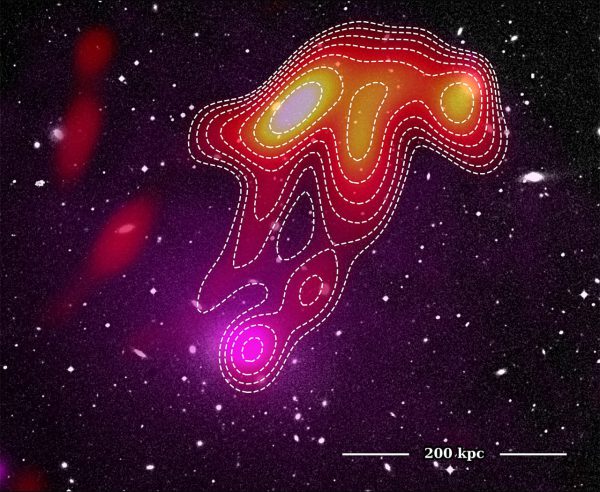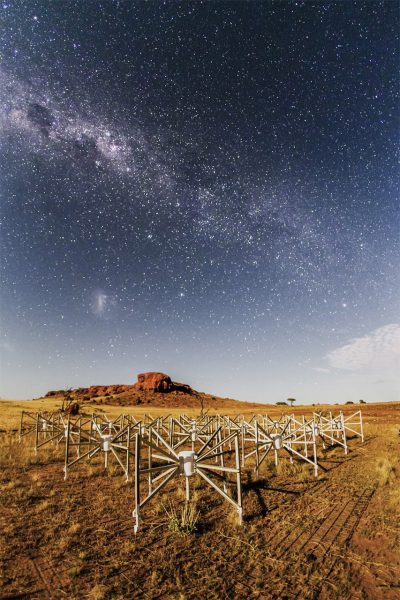
It’s said that the universe is not only stranger than we imagine; it is stranger than we can imagine. It seemed to have got a lot stranger when astronomers in outback WA observed “a ghostly jellyfish-like structure” in their data.
The Australian-Italian research team using the Murchison Widefield Array (MWA) telescope observed the cluster of galaxies known as Abell 2877 and noticed something very odd. Of course, it isn’t an actual space-jellyfish (we also advise against researching “living sky” conspiracies) – but the discovery is remarkable enough on its own.
Torrance Hodgson, from the Curtin University node of the International Centre for Radio Astronomy Research (ICRAR) in Perth, is the lead author on the paper ‘Ultra-Steep Spectrum Radio Jellyfish Uncovered in Abell 2877’. Hodgson said “This radio jellyfish holds a world record of sorts. Whilst it’s bright at regular FM radio frequencies, at 200 MHz the emission all but disappears.
“No other extragalactic emission like this has been observed to disappear anywhere near so rapidly.” Observing the cluster for 12 hours at radio frequencies between 87.5 and 215.5 megahertz, the jellyfish only appears when they turned down the frequency. Hodgson says the phenomenon is difficult to explain.

“Our working theory is that around 2 billion years ago, a handful of supermassive black holes from multiple galaxies spewed out powerful jets of plasma. This plasma faded, went quiet, and lay dormant,” he says.
Hodgson suggests that, quite recently, two things happened: “the plasma started mixing at the same time as very gentle shock waves passed through the system.” In turn, this briefly reignited the plasma, lighting up the jellyfish and its tentacles for astronomers to see (with low-frequency radio telescopes).
The MWA – precursor to the Square Kilometre Array (SKA) – is located at CSIRO’s Murchison Radio-astronomy Observatory in remote WA. Construction on the SKA at the site is scheduled to begin in less than a year.
Professor Johnston-Hollitt, Hodgson’s supervisor and co-author, says the SKA will be thousands of times more sensitive and have much better resolution than the MWA.
“Discoveries like the jellyfish only hint at what’s to come, it’s an exciting time for anyone seeking answers to fundamental questions about the cosmos,” Johnston-Hollitt said.






